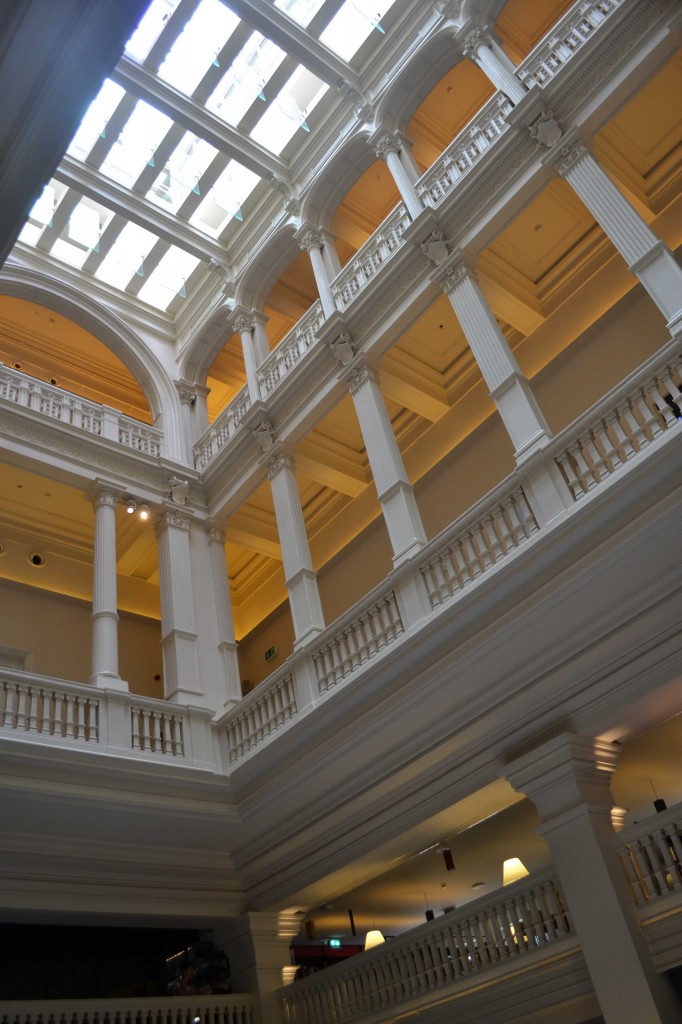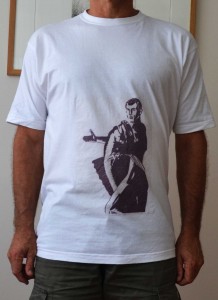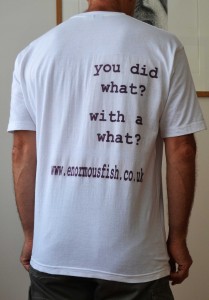

Posted June 6, 2014 Posted by Adam in Uncategorized
This is a partial list of sources consulted in this project.
Barbet, A. and Şener, S. (1997) Conservation Work at Iznik: Elbeyli Tomb Paintings. Available online at: http://www.envanter.gov.tr/files/belge/A16ASR1_0663.pdf Accessed Dec 14th, 2014
Belting, H, Mango, C and Mouriki, D (1978)The Mosaics and Frescoes of St Mary Pammakaristos (Fethiye Camii) at Istanbul. Dumbarton Oaks Study No. 15. Dumbarton Oaks Center for Byzantine Studies, Washington DC Available online at: http://www.jstor.org/discover/10.2307/2847666?uid=3739192&uid=2129&uid=2&uid=70&uid=4&sid=21105237414283
Beylie, Leon de (1903) L’Habitation Byzantine. Grenoble: H. Falque & F. Perrin, Paris: E. Leroux. Available online at: https://archive.org/details/lhabitationbyzan00beyl
Christie-Miller, Alexander (2013): Turkey: Is Orthodox Denomination Connected to Coup Case?Eurasianet.org, Available at: http://www.eurasianet.org/node/66525
Clement, Clara Erskine (1895) Constantinople: The City of the Sultans. Estes and Lauriat, Boston.
Crow, James, Bayliss, Richard and Bono, Paolo (2000) The Anastasian Wall and the Water Supply of Constantinople Survey 2000. University of Newcastle. Available at:http://www.envanter.gov.tr/files/belge/A19ASR2_0885.pdf
Crow, James (2012) Water in Late Antique Constantinople in Two Romes: Rome and Constantinople in Late Antiquity edited by Lucy Grig, Gavin Kelly. Oxford University Press
Çağaptay, Suna (2011)The Church of the Panagia Pantobasilissa in Trigleia (ca 1336) Revisited: Content, Context and Community. İstanbul Arıştırmaları Yıllığı. Available online at: http://www.academia.edu/1794948/The_Church_of_Panagia_Pantobasilissa_in_Trigleia_ca._1336_Revisited_Content_Context_and_Community Accessed 20 Aug 2015
Çeçen, Kazım (1996) The Longest Roman Water Supply Line. Türkiye Sinai Kalkınma Bankası
Davey, Richard (1907): The Sultan and his Subjects. Chatto and Windus, London 1907. Text available at: http://archive.org/stream/sultanhissubject00daveuoft/sultanhissubject00daveuoft_djvu.txt
Devereaux, Rima (2012) Constantinople and the West in Medieval French Literature: Renewal and Utopia. D.S. Brewer
Diez, Ernst and Glück, Heinrich (1920): Alt Konstantinopel. Roland Verlag, München.
Ecumenical Patriarchate of Constantinople (2014): Eparchies and Institutions. Available athttp://patriarchate.org/patriarchate/jurisdiction/
Erdenen, Orhan (1962): İstanbul Adaları. Istanbul Belediye Matbaası.
Freely, John (1983) Blue Guide: Istanbul. London: Ernest Benn, New York: W.W. Norton
Freely, John (2005): John Freely’s Istanbul. Scala publishers, London.
George, Walter S. (1912): The Church of St. Eirene at Constantinople. Oxford Univernity Press, London, 1912
Ghinis, Nikos and Stratos, Constantinos: Monasteries and Churches of the Greek Patriarchate in Constantinople. Available athttp://www.atlantaserbs.com/learnmore/monasteries_and_towns/Greek-Ort-Constantinople.htm
Gilles, Pierre or Petrus Gyllius (1729): The Antiquities of Constantinople (translated by J Balls) Italica Press, New York. 1729, 2nd ed 1988
Gorvett, Jon (1998): A Byzantine Plot? Archaeology: A publication of the Archaeological Institute of America. Volume 51 Number 6. Nov/Dec 1998. Available at http://archive.archaeology.org/9811/newsbriefs/byzantine.html
Guerra, Raffaele (2013): Istanbul: Risk of demolition for the Historic Russian Church. Vatican Insider: La Stampa. Available at http://vaticaninsider.lastampa.it/en/world-news/detail/articolo/chiesa-church-iglesia-istanbul-turchia-turquia-turkey-27161/
Güldal, Fatih (2009) Istanbul’un 100 Kaybolan Eseri. Istanbul Büyükşehir Belediyesi Kültür A.Ş. Yayınları.
Harrison, R. M. (1986) Excavations at Saraçhane in Istanbul, vol. 1: The Excavations, Structures, Architectural Decoration, Small Finds, Coins, Bones and Molluscs. Princeton, New Jersey. 1986
Hayden, Robert M, Hande Sözer, Tuğba Tanyeri-Erdemir and Aykan Erdemir (2011) The Byzantine Mosque at Trilye: A Processual Analysis of Dominance, Sharing, Transformation and Tolerance. History and Anthropology, Vol 22, No 1. March 2011. Pp 1 – 17 Available online at: http://www.academia.edu/2546972/The_Byzantine_Mosque_at_Trilye_A_Processual_Analysis_of_Dominance_Sharing_Transformation_and_Tolerance Accessed 20 Aug 2015
Hotz, Walter (1971): Handbuch der Kunstdenkmäler Byzanz Konstantinopel Istanbul. Deutschen Kunstverlag, München.
Inalcık, Halil (2012): The Survey of Istanbul 1455. Türkiye İş Bankası Kültür Yayınları, Istanbul.
Janin, R. (1964): Constantinople Byzantin: developpement urbain et repertoire topographique. Institut Francais d’Etudes Byzantines, Paris.
Karaca, Zafer (2008) İstanbul’da Tanzimat Öncesi Rum Ortodoks Kiliseleri. Yapı Kredi Yayınları, Istanbul.
Kırımtayif, Süleyman (1988): Byzantine Churches in Istanbul: the transformation into mosques or masjids. Available at: http://suleymankirimtayif.com/pdf/ByzantineChurchesinIstanbul.pdf
Kolay, Ilknur and Çelik, Serpil (2006): Ottoman Stone Acquisition in the Mid-sixteenth Century: the Süleymaniye complex in Istanbul. Muqarnas: An Annual on the Visual Culture of the Islamic World. XXIII, 251-272. Available athttp://archnet.org/system/publications/contents/6752/original/DPC3614.pdf?1384801749
Liddell, Robert (1956): Byzantium and Istanbul. Macmillan, New York.
Maguire, Henry (1997): Byzantine Court Culture from 829 to 1204. Dumbarton Oaks, Washington D.C.
Majeska, Robert P. (1984): Russian travellers to Constantinople in the 14th and 15th Centuries.Dumbarton Oaks, Washington D.C.
Mamboury, Ernest (1925) Constantinople: Tourists’ Guide, 1st edition. Rizzo and Son, Constantinople.
Mamboury, Ernest (1951): Istanbul Touristique. Çituri Biraderler Basımevi, Galata.
Mango, Cyril and Ševčenko, Ihor (1973) Some Churches and Monasteries on the Southern Shore of the Sea of Marmara – Field Report. Dumbarton Oaks Papers no: 27. Trustees for Harvard University, Washington D.C.
Mango, Cyril (1976): Byzantine Architecture. New York.
Mango, Cyril (1991): Approaches to Byzantine Architecture. Exeter College, Oxford. In Muqarnas: An Annual on Islamic Art and Architecture, edited by Oleg Graba Vol VIII pp 40-44. Text available at:http://archnet.org/system/publications/contents/4177/original/DPC0327.pdf?1384781501
Mango, Cyril (1999) Where at Istanbul was the Monastery of Christos Pantepoptes? National Documentation Centre, Athens. Available online at: http://www.deltionchae.org/index.php/deltion/article/view/1196/1121
Mango, Cyril (2002): The Oxford History of Byzantium. Oxford University Press.
Marinis, Vaseleios (2014) Architecture and Ritual in the Churches of Constantinople. Cambridge University Press, New York.
Matthews, Thomas (2001): The Byzantine Churches of Istanbul. Institute of Fine Arts, New York University. Available athttp://www.nyu.edu/gsas/dept/fineart/html/Byzantine/
Micklewright, N (2013) Artamanoff: Picturing Byzantine Istanbul 1930-1947. Koç Üniversitesi Yayınları, Istanbul. Images available online at: http://icfa.doaks.org/collections/artamonoff/items/index/page/4?sort_field=collection_id
Millas, Akylas (2000): Pera: The Crossroads of Constantinople. Militos, Athens.
Müller-Weiner, Wolfgang (1977) Bildlexikon zur Topographie Istanbuls (Deutsches Archäologisches Institut) Verlag Ernst Wasmuth Tübingen
Nelson, Robert S. (2004) Hagia Sophia, 1850-1950: Holy Wisdom Modern Monument. University of Chicago Press
Ousterhout, Robert (2000): Contextualizing the Later Churches of Constantinople: Suggested Methodologies and a Few Examples. Dumbarton Oaks Papers No: 54. Washington D.C. Text available at:http://www.doaks.org/resources/publications/dumbarton-oaks-papers/dop54/dp54ch13.pdf
Paspates, Andros (2004): The Great Palace of Constantinople (Translated by W Metcalfe) Facsimile ed, Kessinger Publishing, Whitefish, Montana.
Pinkowski, Jennifer (2013): Ruins of Forgotten Byzantine Port Yield Some Answers Yet Mysteries Remain. Scientific American, Jan 2 2013. Available at http://www.scientificamerican.com/article/ruins-of-forgotten-byzantine-port-yield-some-answers/
Procopius (1940): Buildings. Loeb Classic Library. Harvard University Press. 1940. Text available athttp://penelope.uchicago.edu/Thayer/E/Roman/Texts/Procopius/Buildings/1A*.html
Procopius (1927): Secret History, translated by Richard Atwater, (Chicago: P. Covici, 1927; New York: Covici Friede, reprinted, Ann Arbor, MI: University of Michigan Press, 1961. Text available at:http://www.fordham.edu/halsall/basis/procop-anec.asp
Sudaş, İlknur (2014) Bizans Kral Mezarıyla Kumar Oynuyoruz. Ark-Tera. Available online at: http://www.arkitera.com/haber/22489/bizans-kral-mezariyla-kumar-oynuyoruz. Accessed 30th Oct 2015.
Sumner-Boyd, Hilary and Freely, John (1972): Strolling Through Istanbul. Redhouse Press, Istanbul.
Tanındı, O. and Kurt, Ö (2008) Archaeological Destruction in Turkey: Year 2008 Preliminary Report. Marmara Region – Byzantine Period. Türkiye Arkeolojik Yerleşmeleri (TAY). Available online at http://www.tayproject.org/downloads/Rap/Dest_Rep_08_Mar_Byz.pdf Accessed 25-11-14
Tanindi, O, Kurt, Ö. et al (2009): Archaeological Destruction in Turkey, Preliminary Report – Marmara Region Byzantine Period, TAY Project – Scientific Reports Series 16/Eng, Istanbul. Partially available at: http://www.tayproject.org/dosyabizmareng.html
Tuna, Turgay and Şeker, Sabriye (2009): Makri Hori’den Bakırköy’e, Ayastefanos’tan Yeşilköy’e.Mimarlar Odası, Istanbul. 2009
Tunay, M.I. (2001) Byzantine Archaeological Findings in Istanbul during the Last Decade. in: Necipoglu Nevra (ed.) Byzantine Constantinople: Monuments, Topography and Everyday Life. The Medieval Mediterranean: Peoples, Economies and Cultures, 400-1453, v. 33. Leiden: Brill pages 217–231
Tuvi, Reyan (undated 2004?) Geçmişten Bugüne Tirilye. Türk Prysmıan Kablo ve Sistemleri
Van Millingen, Alexander (1912): The Byzantine Churches of Istanbul. Available at http://www.gutenberg.org/files/29077/29077-h/29077-h.htm
Vin, J.P.A van der (1980) Travellers to Greece and Constantinople: Ancient Monuments and old traditions in Medieval Travellers’ Tales. Nederlands Historisch Archaeologisch-Instituut te Istanbul. Available online at http://www.nino-leiden.nl/doc/PIHANS049.pdf
Wortley Montagu, Lady Mary (1763) Letters of the Right Honourable M–y W–y M—e: Written During Her Travels in Europe, Asia and Africa to Persons of Distinction, Men of Letters, &c. in Different Parts of Europe. Project Gutenberg. Available at: http://pds.lib.harvard.edu/pds/view/7320431?n=402 Accessed 17th Dec, 2014
Yackley, Ayla (2013): Istanbul’s last White Russians pray for church’s survival. Reuters, Istanbul. Available at: http://www.reuters.com/article/2013/08/02/turkey-church-idUSL6N0G325U20130802
Yerasimos, Stephane (2000): Constantinople: De Byzance a Istanbul. Editions Place des Victoires, Paris.
Ziflioğlu, Vercihan (2013): Istanbul’s Hagia Elia Church Hosts First Mass in 41 Years. Hurriyet Daily News. Available at: http://www.hurriyetdailynews.com/istanbuls-hagia-elia-church-hosts-first-mass-in-41-years.aspx?PageID=238&NID=51935&NewsCatID=341
Ziyaoğlu, Rakım (1954): Istanbul Albümü 1950 – 1953. Istanbul Milli Eğitim Basınevi.
De Zulueta, Mavis (2000) A Grand Entrance or the Façade and Crypt of a Church in the Marmara Sea Walls at Istanbul? Revue des Etudes Byzantines, Vol 58. p253 – 267. Available online at: http://www.persee.fr/web/revues/home/prescript/article/rebyz_0766-5598_2000_num_58_1_1996 accessed 20th Dec, 2014
The staff at the Istanbul Archaeological Museum and SALT Araştırma, Galata (one of the most beautiful libraries in the world) have been wonderful at dealing with my halting enquiries.
I used Google Earth to find the map references. If you copy the numbers and paste them into the location box on pretty well any mapping app, it will show you the location of the church.

Posted June 6, 2014 Posted by Adam in Uncategorized
Alexander van Millingen’s definitive text on Byzantine churches in Istanbul was published in 1912. Since then, several churches that he described have disappeared. Strangely, more have reappeared. The building boom of the 20th century followed by the excavations for the Istanbul Metro have revealed traces of buildings that had passed out of memory. New bits of masonry are being exposed all the time.
The question of what constitutes a Byzantine church is one that I shall duck. Like a broom that has had the head and the handle replaced several times, a church may have been in use constantly in the same place but not be what it once was. Devastating fires have been a frequent instrument of urban renewal in Constantinople and the Byzantine edifice that one sees now may have little of the actual matter that was there in the fifteenth century.
The survey commissioned by Mehmet II immediately after his 1453 conquest of Constantinople conquest listed more than twenty monasteries, all with churches, attendant buildings and communities associated with them. About a century later, Gyllius noted: The Greeks… have lost their six hundred churches except the church belonging to the monastery where their Patriarch dwells. The rest are either ruined or prostituted to Mahometan worship. Historical records of the churches are sketchy at best and the manner in which existing bits of stone correspond to which past Byzantine glories is a matter for enjoyable debate and very little that can be verified by empirical evidence. Hence, what I have written about the Byzantine churches of Constantinople is little more than exhaustively-researched nonsense.
Perhaps of equal interest to the churches of the Byzantine Empire is the story (and the physical remnants) of the Orthodox Patriarchate. Demoted from the glory of Aya Sofya by the Ottoman conquest of 1453, the Patriarchate moved through a series of steadily less prestigious headquarters until it came to reside in the current location. Here it has been since 1601 but the Patriarchate has not remained stable.
The Constantinople Patriarch was once the undisputed head of Orthodoxy. Nationalism, doctrinal squabbles and good old power struggles have given rise to a series of schisms and secessions. A series of exarchates was the result, with the Greek Patriarchate refusing to recognise some of the rebels for centuries. Realising that the alternative was to relinquish all influence over the upstart churches, the Patriarchate has granted official recognition to the more powerful offshoots, now being labelled as autocephalous (self-headed) churches. The Greek Patriarch in Constantinople retains the position of ‘first among equals’ in Ecumenical Councils. The current Patriarch, Bartholomew, is a man of such gentleness, reason and political astuteness that compared to him, the Dalai Lama appears impetuous and strident. These personal qualities have enabled the Greek Patriarchate to maintain its nominal top-of-the-heap status in the world of Orthodoxy. However, the Russian Orthodox Church has recovered from the temporary setback of Communism and is beginning to insist that the numerical superiority of its followers should propel it to a position of primacy.
A footnote to Turkish nationalist history is the sad tale of the Turkish Orthodox Church. This is an entity initiated by a self-proclaimed patriarch who managed in the 1920s to hitch himself to the unstoppable wagon of republican fervour and carve himself out a sorry little empire of appropriated churches. To say that the Türk Ortodoks Church has no congregation is an injustice: if required to demonstrate the fervour of the populace for this non-church, a couple of the more pliable members of the patriarch’s family – the Erenerols – might bestir themselves to simulate piety once a decade or so.

Posted June 6, 2014 Posted by Adam in Uncategorized
This was when I was performing a few times a week with bands and needed something to wear that was different from anyone else. I would buy plain white Ts and cut the hems off at the neck and arms. Then I would cut out a stencil and use auto spray paint to transfer it to the shirt.
My favourite design had the words ‘YOU HAD SEX WITH A WHAT?’ on the front. On the back was one of a variety of designs. I had made cutouts in the shapes of a turtle, a crab, a shark, a lobster and a starfish. I would use these stencils to spray the outline of the animal in black onto the back of the shirt. Then I would use other colours to spray detail onto them.
I sold a few off my back at venues where we were playing but never made the effort to try for profit. In England, I toned down the wording to, ‘You did what? With a what?’ in order to promote Sex with an Enormous Fish. You can buy one if you like. £20. It will take about two weeks to get to you.

Posted June 6, 2014 Posted by Adam in Uncategorized
The AA website shows 22 miles for the route from Staines to Guildford. But I was drunk and meandering. I was working at a school in Staines and my girlfriend lived and worked in Portsmouth. She had organised us onto a trip to Belgium, leaving from Portsmouth early on Saturday morning. On Friday after school, I went to The Swan in Staines for the staff debrief of the events of the week.
Some time after 11, I looked at my watch and ran out of the pub. The last train for the convoluted route to Portsmouth left at around midnight and my flat, just opposite the railway station, was some distance away. I made it home and packed quickly. I looked out of the window. No train in the station yet. I seemed to have plenty of time. I had that secure drunken feeling that everything was going to work out fine.
As I left the house, I saw the train drawing into the station. No problem. It always stayed at the platform for ages. Not this time. I was just coming down onto the platform when it drew off. I watched the last carriage disappear. It was midnight, I needed to be in Portsmouth by 7 and the train had gone. I might as well go home. I reached into my pocket and found that I had locked my keys into the flat. I stood there a while longer. No reasonable course of action came to mind.
I started walking. For some reason, I headed for the Thames and walked along the towpath towards Chertsey. It was lovely in the coolness of night but it was the least direct route possible to Chertsey. I took my phone out and called my girlfriend. She asked, quite reasonably, why I was walking to Chertsey. With the confidence of alcohol, I answered, ‘It’s the best way to get there’.
I got to Chertsey, walked across the bridge and saw a sign to Woking. Woking had a major railway station. I had a goal. It’s quite straightforward in a car but the motorway and A-road interchanges are not designed for lone pedestrians with a slightly faulty sense of direction. I couldn’t see any signs for Woking. Still, the moon was out and I had a vague idea that I should be going south so I headed along the road to Ottershaw. This was in the days before everyone carried a device with GPS. Just before Ottershaw, I saw a sign to Chobham. I knew where Cobham was. I needed to be somewhere to the west of Cobham. I didn’t read it carefully enough to see the extra h.
I arrived in Chobham. The phone rang. My girlfriend. “You’re where?” She looked up where I was on her computer and started laughing in that way that a woman does when she has no idea what to say to her man without demolishing his self-concept. I looked at a map on a bus stop. Woking seemed almost back where I had come. I started running. I was wearing heavy duty walking boots. Good for a long hike but not for a run.
My feet were getting sore as I entered Woking. I began to pass the characteristic red-brick-with-timbered-eaves architecture of every single building on the outskirts of a town in Surrey. Ah. A sign to the railway station. I walked onto the platform. The place was silent and empty. I gazed blearily at the timetables. No train from Woking to Portsmouth until after 7. However, there was one from Guildford to Havant at 6 o’clock. It was after 5 now. Still, that was something to aim for.
I began to run. The main street of Woking echoed to my bootsteps as I trotted to where I thought the road to Guildford was. I got it right. It was only about 10 kilometres to Guildford. I even had time for a short rest before the train arrived.
My feet hurt when it was time for the Saturday night pub crawl through Ostende, but a few oddly-shaped glasses of specialist Belgian beers cured that.

« Previous Entries


